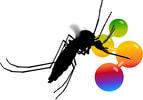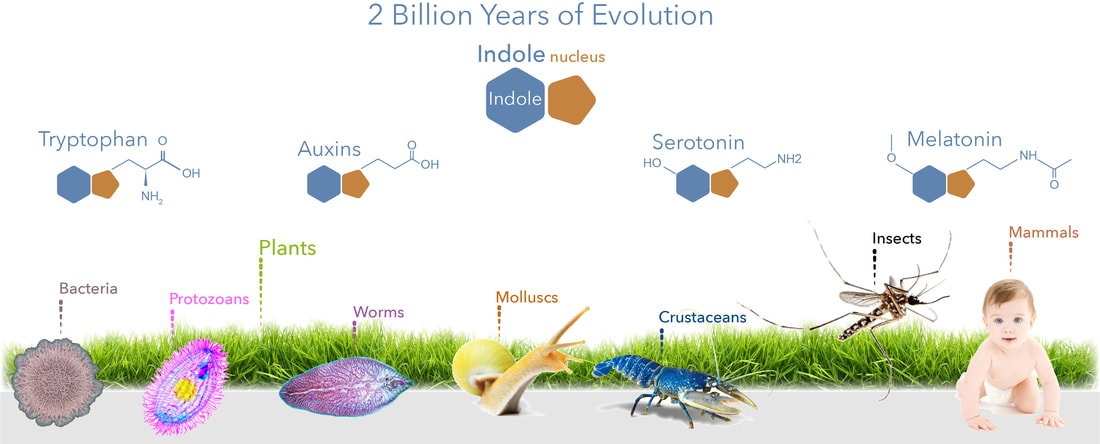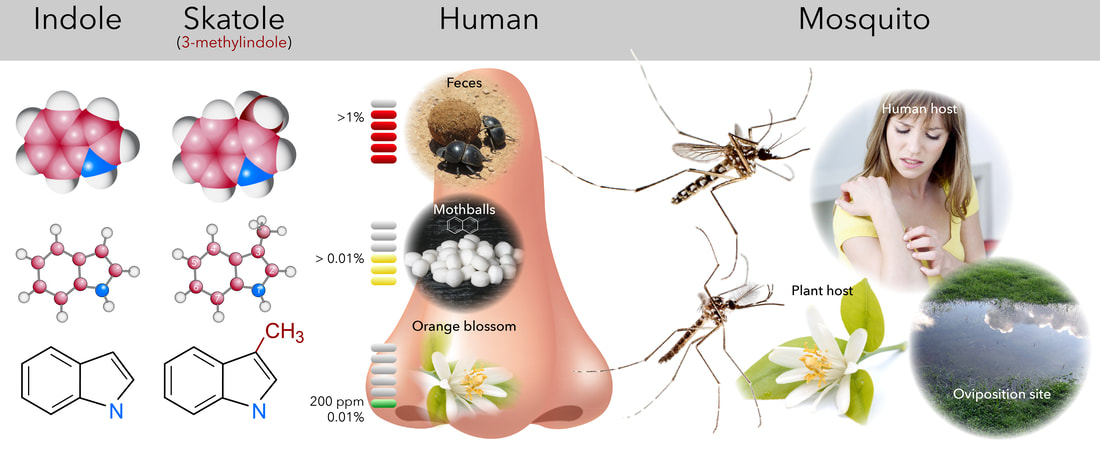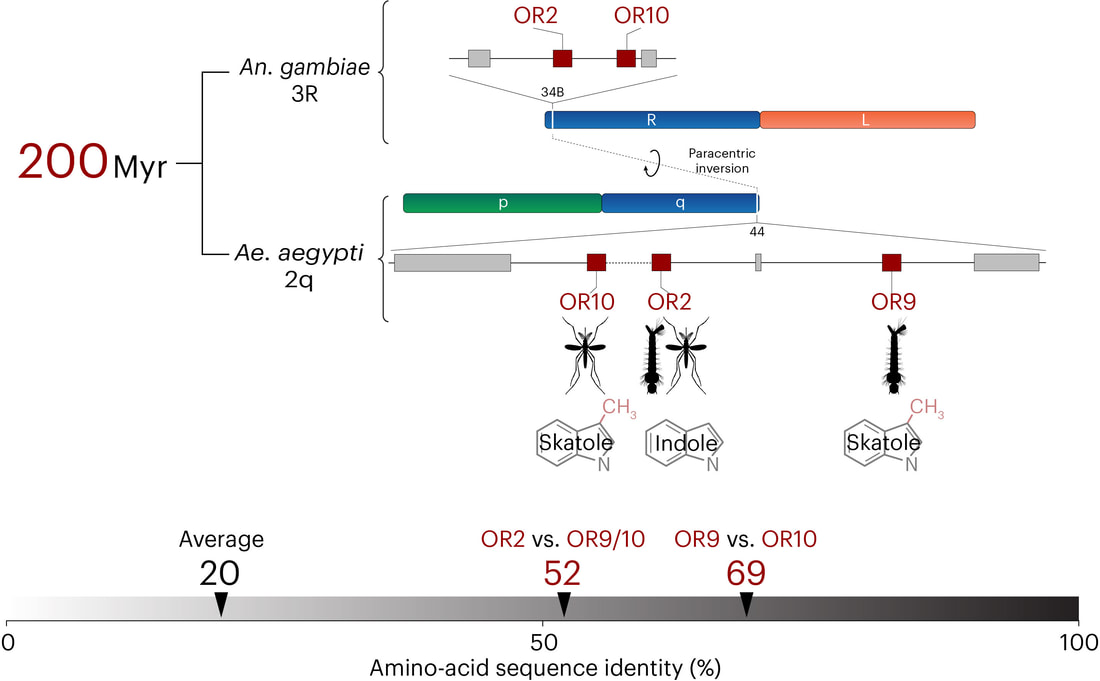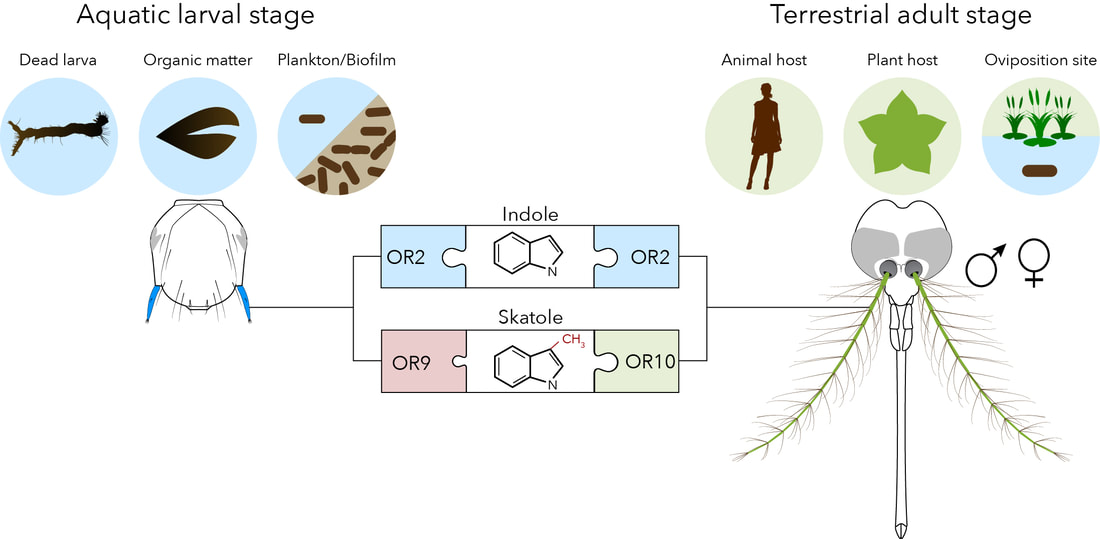Indoles are as old as life itself.
Indole are synthesized by the three biological domains of life (Bacteria, Archaea, and Eukaryotes) where they fulfill significant biological roles, including intracellular and intercellular signaling.
The Ancient Influence Of Indole In The Life Of Mosquitoes And Their Human Hosts.
Indole and skatole are benzenoid aromatic volatile organic compounds present in our everyday life as common additives in perfumes, chocolates, ice-cream, coffees, and fruity-flavored sweets. They are quasi identical chemicals except for the presence of a methyl group on carbon position 3 in the case of skatole.
At very low concentration they evoke a flowery smell. At higher concentration, they are reminiscent of mothballs and are often associated with fecal odor, although the unpleasant smell of fecal matter is more likely to be caused by sulfur containing compounds.
Mosquitoes smell Indoles on land.
The significance of these two compounds for mosquitoes is poorly understood. They may act as oviposition cues or as human attractants. However, they may also act as nectar guides, since indole and skatole are emitted by jasmine, orange blossoms and other flowers.
It is essential for mosquitoes to distinguish between indole and skatole.
Throughout their 200 million years of evolution, mosquitoes have evolved and maintained the ability to detect and distinguish indole and skatole. The genome of Culicinae (Aedes, Toxorhynchites) have 3 three odorant receptor copies (OR2, OR9 and OR10) to detect these compounds in water and in the air.
Mosquitoes smell Indoles under water.
How do mosquito larvae navigate and locate food sources in water? Larvae are usually filter-feeders, sieving through water for plankton (bacteria, yeast) or decomposing organic matter. Are they just grazing indiscriminately or do they actively sense foraging cues given off by food stuff?
It is not only adult mosquito that bear antennae, larvae also possess small antennae to presumably detect foraging odorant cues. It is strange to think of odorants in water since most odorants are highly hydrophobic (repelled by water). However, even the most hydrophobic odorants, even those considered insoluble in water like skatole and indole, can be dissolved in water if present in minute concentration.
It appears that the antennae of mosquito larvae express a limited odorant receptor gene set of which 60% are only found in the larva and the remaining 40% are shared with the adult stage. Indolergic receptors (odorant receptors sensitive to indole compounds) indicate that Culicinae mosquitoes such as the Zika mosquito have evolved two distinct molecular strategies to detect skatole in aquatic and terrestrial environments. Larval-specific odorant receptor 9 (OR9) is supersensitive and narrowly tuned to skatole, much more so than its adult counterpart (OR10).
It is not only adult mosquito that bear antennae, larvae also possess small antennae to presumably detect foraging odorant cues. It is strange to think of odorants in water since most odorants are highly hydrophobic (repelled by water). However, even the most hydrophobic odorants, even those considered insoluble in water like skatole and indole, can be dissolved in water if present in minute concentration.
It appears that the antennae of mosquito larvae express a limited odorant receptor gene set of which 60% are only found in the larva and the remaining 40% are shared with the adult stage. Indolergic receptors (odorant receptors sensitive to indole compounds) indicate that Culicinae mosquitoes such as the Zika mosquito have evolved two distinct molecular strategies to detect skatole in aquatic and terrestrial environments. Larval-specific odorant receptor 9 (OR9) is supersensitive and narrowly tuned to skatole, much more so than its adult counterpart (OR10).
